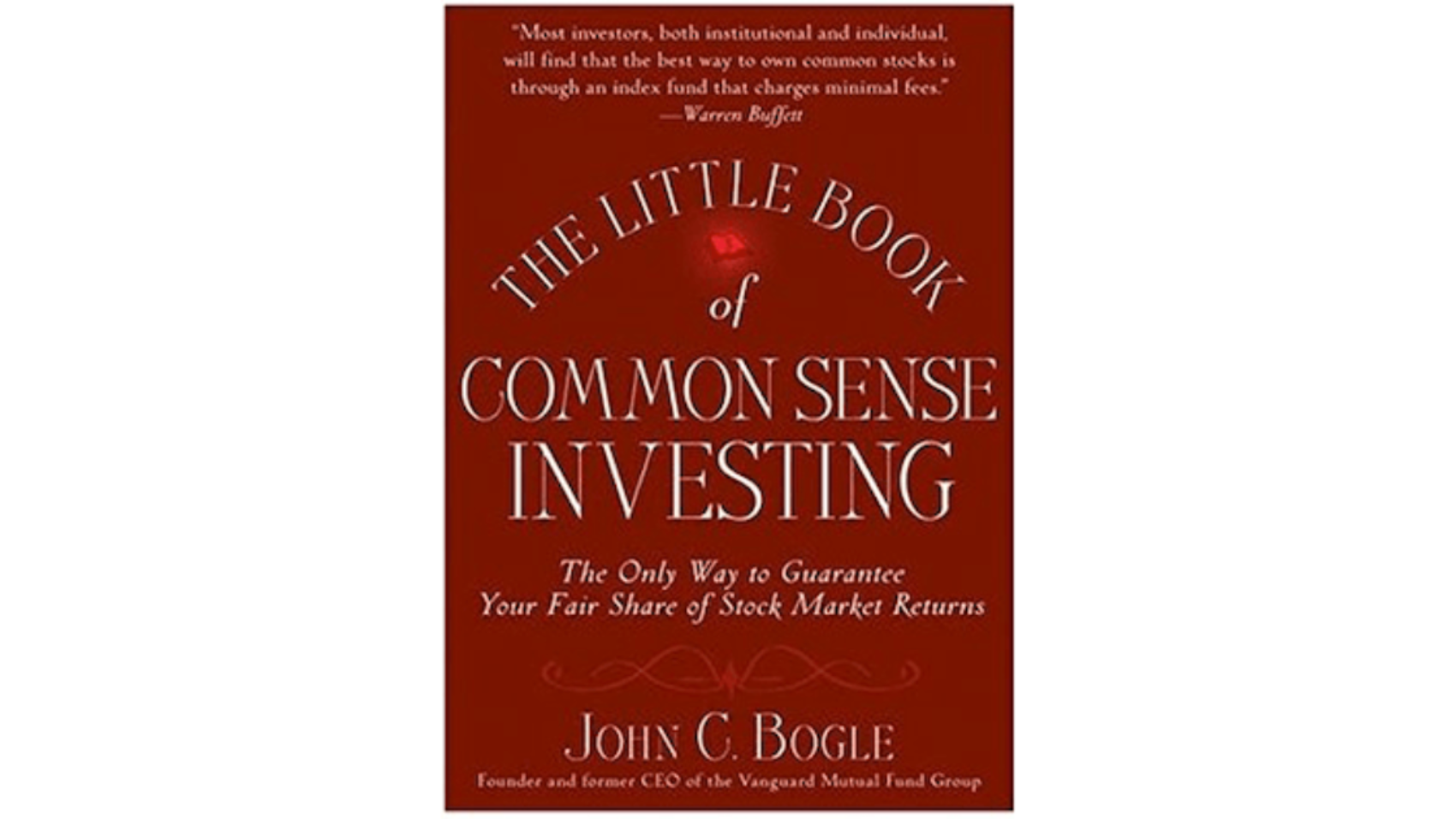John C. Bogle’s “The Little Book of Common Sense Investing” offers a guide to investing in index funds. Here is a synopsis of the book: The book begins by stating that most active investors fail to outperform the market over time and that trying to beat the market is a losing endeavor for the vast majority of people. Instead, Bogle argues for investing in low-cost index funds that track broad market indexes such as the S&P 500. He claims that by doing so, investors can capture the overall market’s profits at a cheap cost, rather than attempting to beat the market through stock selection or market timing.
Bogle then goes on to give a brief history of index funds, detailing how they were created in the 1970s and how they have grown in popularity over time. He then offers practical tips on how to invest in index funds, such as selecting the correct funds, understanding asset allocation, and reducing taxes and expenditures.
The book also debunks typical investing myths and fallacies, such as the notion that it is possible to regularly outperform the market or that active management is required for strong returns. Bogle contends that these concepts are mostly false and that investors should instead focus on long-term, low-cost index fund investing.
Overall, “The Little Book of Common Sense Investing” is a simple, practical approach to index fund investing that emphasizes the significance of simplicity, discipline, and a long-term view in achieving financial success.
The Book in 3 Sentences
- Most active investors fail to outperform the market over the long run, and most people lose money trying to beat the market through stock selection or market timing.
- Investing in low-cost index funds that track broad market indexes is a straightforward and cost-effective way to catch the overall market’s results.
- By concentrating on long-term, low-cost index fund investing, investors can achieve financial success without attempting to outperform the market through active management or stock selection.
Impressions
“The Little Book of Common Sense Investing” by John C. Bogle is widely regarded as a classic investment book that has influenced many investors and financial advisors. Here are some of the most common impressions people have of the book:
1. Simple and straightforward: Many people appreciate the book’s clear and concise writing style, which makes complex investing concepts easy to understand and apply.
2. Emphasis on index funds: The book’s focus on investing in low-cost index funds has resonated with many people, who appreciate the simplicity and effectiveness of this approach.
3. Critique of active management: Bogle’s critique of active management and stock picking has been widely accepted by many investors and financial professionals, who believe that most active managers fail to outperform the market over the long term.
4. Long-term perspective: The book emphasizes the importance of taking a long-term perspective when investing, which many people find reassuring and helpful in achieving their financial goals.
5. Emphasis on low costs: The book’s focus on minimizing costs through low-cost index funds and avoiding high fees and expenses has been widely praised by people who appreciate the importance of keeping investment costs low.
How I Discovered It
“The Little Book of Common Sense Investing” by John C. Bogle is a popular investment book that has gained a large following among investors and financial professionals. The book is frequently discussed on investment forums and blogs, where readers share their thoughts and experiences with the book and this is where I found it.
Who Should Read It?
“The Little Book of Common Sense Investing” by John C. Bogle is a valuable resource for anyone who wants to learn about investing and build a successful investment strategy. Here are some groups of people who may benefit from reading the book:
- New investors: The book provides a clear and concise introduction to investing, making it a great resource for those who are new to investing and want to learn the basics.
- DIY investors: The book is a valuable resource for DIY (do-it-yourself) investors who want to manage their own investments and build a low-cost, long-term investment strategy.
- Financial advisors: The book is frequently recommended by financial advisors who advocate for low-cost, index fund investing and who want to provide their clients with a simple and effective investment strategy.
- Active investors: Even for those who prefer active management or stock picking, the book provides a valuable critique of active management and the benefits of index fund investing.
- Anyone interested in personal finance: The book provides a valuable overview of investing and personal finance, making it a great resource for anyone interested in improving their financial literacy.
How the Book Changed Me
After reading “The Little Book of Common Sense Investing” by John C. Bogle, I experienced a shift in my investment philosophy and approach.
1. Embraced passive investing: The book makes a strong case for passive investing and index fund investing, and I come to embrace this approach as a result.
2. Focus on low costs: Bogle emphasizes the importance of low-cost investing and the negative impact of fees and expenses on investment returns. After reading the book, I became more focused on minimizing costs and fees in my investment portfolio.
3. Think long-term: Bogle stresses the importance of a long-term investment horizon and the benefits of staying invested through market ups and downs. After reading the book, I became a more patient and disciplined investor, focused on long-term goals rather than short-term gains.
4. Avoid market timing: The book argues against market timing and attempts to predict short-term market movements. After reading the book, I became more skeptical of market timing strategies and focus on a disciplined, long-term approach to investing.
My Top Quotes
- “The winning formula for success in investing is owning the entire stock market through an index fund, and then doing nothing. Just stay the course.”
- “The grim irony of investing, then, is that we investors as a group not only don’t get what we pay for, we get precisely what we don’t pay for.”
- “In investing, you get what you don’t pay for. Costs matter. So intelligent investors will use low-cost index funds to build a diversified portfolio of stocks and bonds, and they will stay the course.”
- “Time is your friend; impulse is your enemy.”
- “Investors should be skeptical of history-based models. Constructed by a rearview mirror looking backward, they can be quite misleading.”
- “If you have trouble imagining a 20% loss in the stock market, you shouldn’t be in stocks.”
- “Successful investing is all about common sense. Simple arithmetic works.”
- “In the fund business, you get what you don’t pay for. Costs matter. So intelligent investors will use low-cost index funds to build a diversified portfolio of stocks and bonds, and they will stay the course.”
- “A good basic principle of investing: just buy a broad-based index fund with low costs and hold it for the long term.”
- “Don’t look for the needle in the haystack. Just buy the haystack!”
Detailed Notes//Key Topics
Here are some of the key topics from “The Little Book of Common Sense Investing” by John C. Bogle:
- The benefits of index fund investing: Bogle makes a strong case for the benefits of index fund investing, arguing that it is a low-cost, low-risk, and effective way to invest in the stock market.
- The risks of active management: Bogle critiques the active management approach to investing, arguing that it is expensive, inefficient, and often fails to beat the market.
- The importance of cost minimization: Bogle emphasizes the importance of minimizing costs and fees in investing, arguing that they can have a significant negative impact on investment returns over time.
- The long-term approach to investing: Bogle stresses the importance of a long-term investment horizon and the benefits of staying invested through market ups and downs, rather than attempting to time the market.
- The dangers of speculation: Bogle warns against the dangers of speculation and market timing, arguing that they are high-risk strategies that often result in poor investment outcomes.
- The role of diversification: Bogle emphasizes the importance of diversification in investing, arguing that it can help to reduce risk and increase returns over time.
- The importance of discipline and patience: Bogle stresses the importance of discipline and patience in investing, arguing that successful investing requires a long-term perspective and a commitment to staying the course through market fluctuations.

